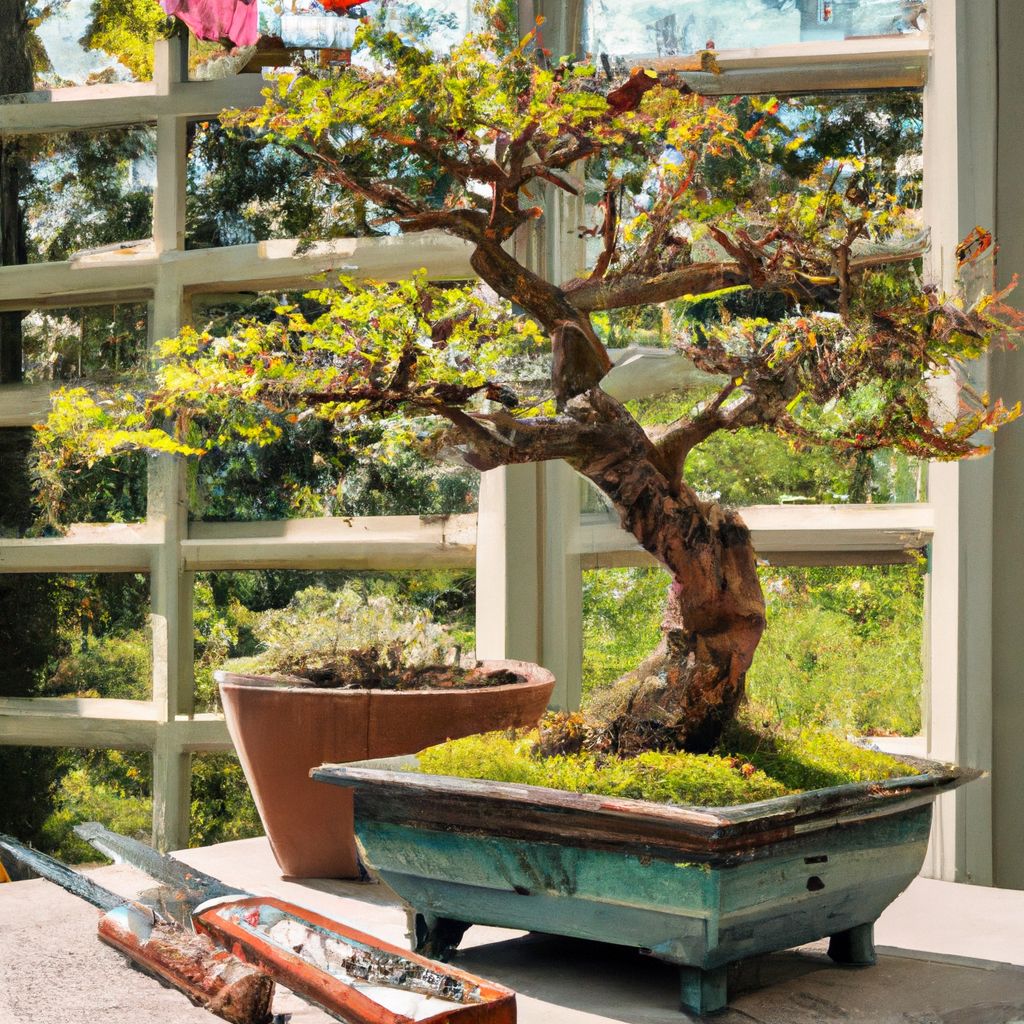Key takeaway:
- Mame Bonsai gardening allows individuals to cultivate beautiful miniature trees in small spaces, making it an appealing choice for those with limited gardening areas.
- Successfully growing Mame Bonsai requires understanding the techniques and tips for starting from seedlings, selecting the right plant species for propagation, and properly caring for the bonsai in terms of watering, sunlight, and soil.
- Maintaining the miniature form of Mame Bonsai involves skillful pruning and shaping, which are essential for creating a visually striking and well-maintained bonsai.
- To ensure the longevity of Mame Bonsai, annual repotting is necessary, and mulching can be utilized to promote horizontal growth and maintain the health and vibrancy of the bonsai.
- The compact size of Mame Bonsai offers amazing features, such as the ability to have miniature flowers and fruits in full bloom, and the ease of achieving the desired look through styling.
Introduction: What is Mame Bonsai Gardening?

Photo Credits: Gardeninggurus.Org by Roger Martin
Mame Bonsai Gardening is an art form that originated in Japan. It involves growing miniature bonsai trees in small containers and meticulously sculpting them. These trees are usually smaller than traditional bonsai trees, ranging from a few centimeters to around 20 centimeters.
To create these mini trees, one must select a species with delicate foliage. Popular choices include Japanese Maple, Juniper, and Japanese Quince. After selecting the species, one must prune and shape the tree with precision and attention to detail. This can involve trimming branches and roots, as well as wiring them.
Mame Bonsai trees have cultural and symbolic significance in Japanese culture. They represent harmony, balance, and a connection to nature. By bringing the beauty of nature into one’s own home or garden, one can experience a sense of peace and serenity.
Mame Bonsai Gardening is not easy. It requires extra care and attention due to the small size of these trees. They need frequent watering, precise pruning, and regular fertilization. Despite the challenges, the results are often stunning and intricate creations, created through patience, dedication, and detail.
One inspirational example of Mame Bonsai Gardening is of a bonsai enthusiast who spent years training a miniature Juniper tree. Through careful pruning, wiring, and nurturing, the gardener created a breathtaking bonsai tree, showing the transformative power of this unique art form.
The Beauty of Mame Bonsai: Small Size, Big Impact
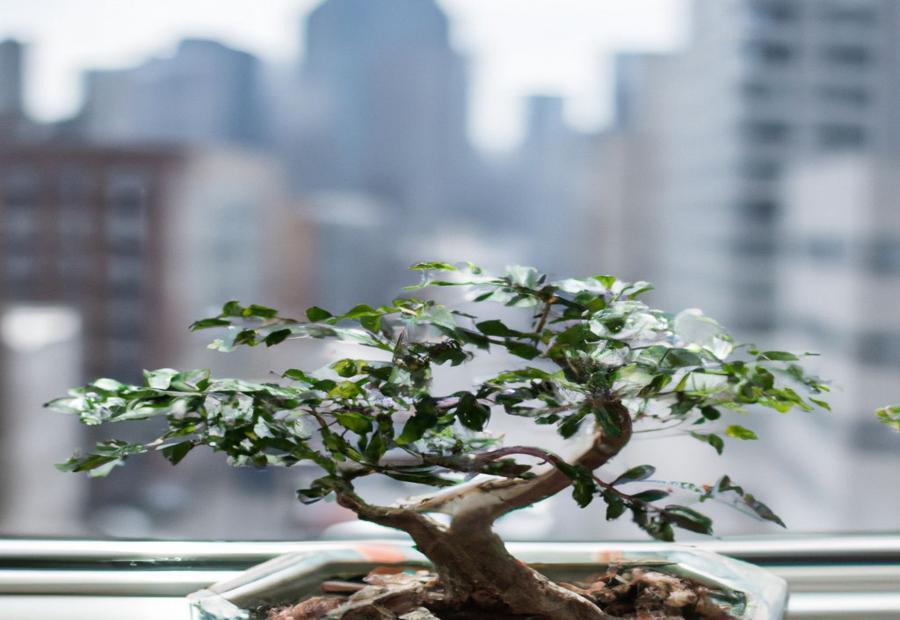
Photo Credits: Gardeninggurus.Org by Mason Torres
With Mame Bonsai, you can experience the enchanting allure of miniature trees, even in the smallest spaces. Discover the captivating world of Mame Bonsai and how these tiny creations make a big impact in any setting.
Miniature Trees for Small Spaces: The Appeal of Mame Bonsai
Mame Bonsai, also known as miniature trees, are special. They bring nature into our homes and offices, even in limited spaces. You can enjoy the art of bonsai without a huge garden. With their intricate details and delicate features, these small trees make a big impression.
The beauty of Mame Bonsai lies in their size. They captivate enthusiasts with their intricate designs and artistic forms. They can show all the characteristics of larger trees, even though they are small. These tiny masterpieces showcase the essence of nature in a miniature scale.
Growing Mame Bonsai needs some tips. Start from seedlings for quick growth. Choose the right plant for miniaturizing through bonsai techniques. Proper care such as watering, sunlight exposure, and soil composition is important for their health and longevity.
Pruning and shaping are vital for Mame Bonsai. Pruning lets enthusiasts create intricate designs that highlight their features. Careful attention is needed to shape each branch and leaf for a harmonious balance.
To ensure longevity, repotting and aftercare are crucial. Annual repotting gives fresh nutrients and prevents root binding. Mulching helps horizontal growth and keeps the trees healthy.
The key benefit of Mame Bonsai is their size combined with amazing features. They can display flowers and even bear fruits. The ease of styling makes it possible to achieve a desired look quickly. This lets enthusiasts create unique displays that reflect their artistic vision.
Growing Mame Bonsai: Techniques and Tips
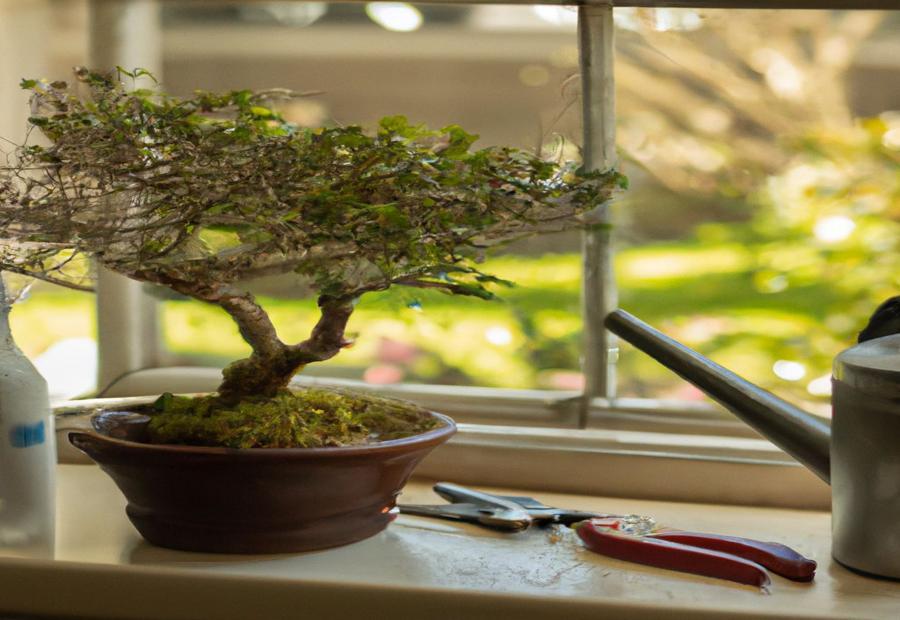
Photo Credits: Gardeninggurus.Org by Billy Jones
Discover the secrets of growing mesmerizing Mame Bonsai with expert techniques and invaluable tips. From quick growth methods for seedlings to choosing the perfect plant species for propagation, and essential care practices like watering, sunlight, and soil maintenance – this guide will empower you to create stunning miniature masterpieces. Unleash your inner bonsai artist and join us on this journey of cultivating enchanting Mame Bonsai.
Starting from Seedlings: Quick Growth Methods
Mame Bonsai gardening is a method to get quick growth and development of small trees. It’s all about picking young plants, giving them the best environment, and using tricks to encourage their growth and make them look good. Here’s what to do:
- Choose strong seedlings with strong roots and stems.
- Make sure they get enough sun, water, and the right soil.
- Use pruning to shape them into miniature forms.
To achieve fast growth in Mame Bonsai Gardening, these steps are key. Selecting the right plants is also important – don’t forget, not all plants fit the miniature mold!
Propagation: Choosing the Right Plant Species
Propagation in mame bonsai gardening is all about selecting the right plant species. This choice is key to the development and growth of miniature trees.
When it comes to plant species for mame bonsai, think size and shape. Different plants have different growth habits and characteristics. These determine the bonsai’s final look.
Pick a plant that loves small containers and is naturally compact. Some plants have slower growth and smaller leaves, making them ideal for mame bonsai.
Also, go for a hardy, adaptable plant species. This ensures the mini tree will stay healthy, even in a small space.
By selecting the right plant species, one can ensure a successful propagation process. This will result in beautiful mame bonsai that flourish in their miniaturized form.
Caring for Mame Bonsai: Watering, Sunlight, and Soil
Caring for Mame Bonsai is essential for their health. Watering must be done delicately; too much can lead to root rot. The amount and frequency depend on the species, pot size, and environment. When the top soil feels slightly dry, water thoroughly and let the excess drain out.
Sunlight is also important. Most bonsai trees need full sun. But some need partial shade or dappled sunlight. Place them in a sunny spot for photosynthesis and growth.
Choose well-draining soil with organic matter and minerals. This helps maintain air circulation and prevents waterlogging. Check the moisture content and adjust watering.
For extra care, use a humidity tray or misting. Protect them from temperature extremes and drafts. By meeting their needs for water, light, and soil you’ll create an optimal environment for your Mame Bonsai to thrive!
Pruning and Shaping Mame Bonsai: Maintaining the Miniature Form
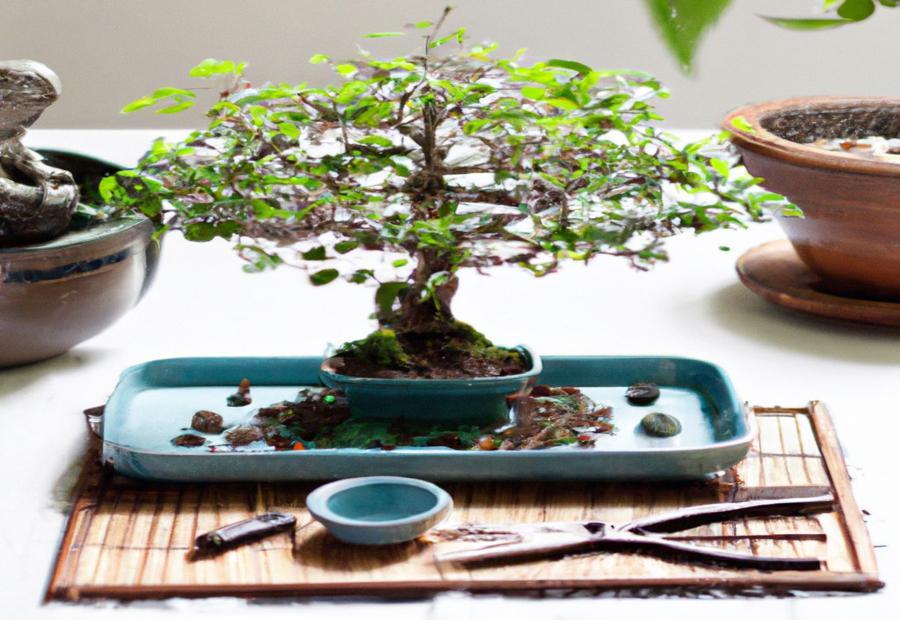
Photo Credits: Gardeninggurus.Org by Roy Green
Pruning and shaping mame bonsai is all about maintaining the miniature form, resulting in exquisite miniature masterpieces that captivate the eye. Discover the art of pruning and how it plays a crucial role in creating unique and visually stunning mame bonsai. Uncover the secrets behind shaping these tiny trees into vessels of intricate beauty, as we delve into the techniques and principles that bring these miniature masterpieces to life.
The Art of Pruning: Creating a Miniature Masterpiece
Pruning is essential for mame bonsai gardening. It helps to create miniature masterpieces by carefully trimming and shaping the branches and foliage. Precision and attention to detail are needed to evoke a sense of visual harmony and balance. Directional pruning, thinning out branches, and leaf removal help create an illusion of age and growth. Pruning also maintains the health and vitality of mame bonsai. By removing dead or diseased branches and redirecting growth patterns, mame bonsai can remain robust and resilient.
Mastering the art of pruning provides a sense of fulfillment for enthusiasts. It allows them to explore their creativity while appreciating nature’s beauty on a small scale. To create your own miniature masterpiece with mame bonsai, you need dedication, patience, and practice.
Repotting and Aftercare are also essential for ensuring the longevity of mame bonsai. TLC is needed to keep your mame bonsai happy and thriving! Start your journey into mame bonsai gardening today!
Repotting and Aftercare: Ensuring Longevity
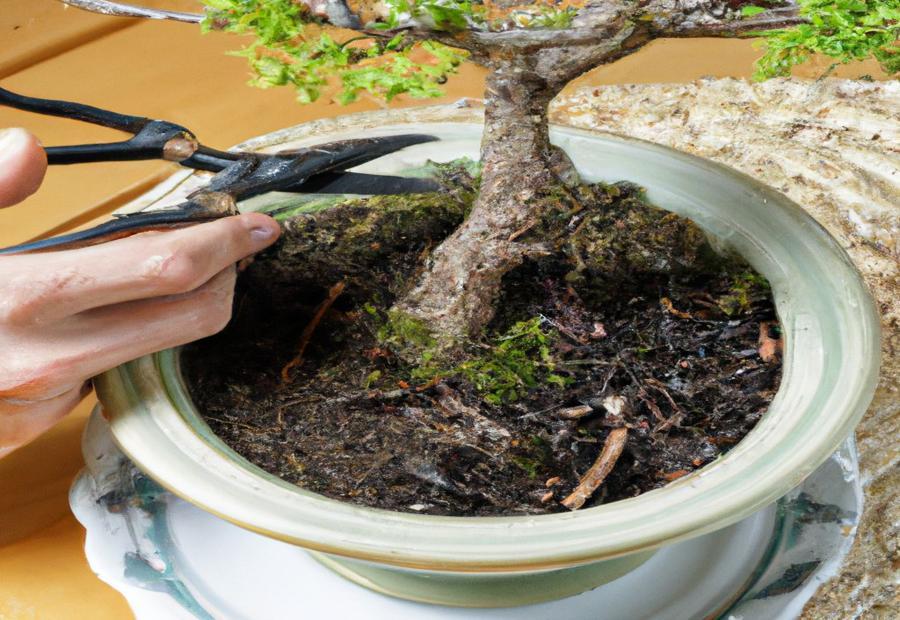
Photo Credits: Gardeninggurus.Org by Nathan Nelson
To ensure the longevity of your Mame Bonsai garden, proper repotting and aftercare are crucial. In this section, we’ll explore the essential practice of annual repotting, explaining why it is a necessary step. Additionally, we’ll discuss the significance of mulching for horizontal growth, promoting the overall health and vibrancy of your Mame Bonsai plants. Get ready to learn how to keep your miniature garden flourishing for years to come.
Annual Repotting: A Necessary Step
Annual repotting is a vital part of caring for mame bonsai trees. By doing it every year, their health and vibrancy can be maintained, aiding in their longevity and continued growth. It also gives the roots access to fresh nutrients and prevents them from becoming root-bound, which could lead to stunted growth.
The best time for repotting is late winter or early spring, just before new growth begins. This ensures that the tree has enough time to start regrowing roots before entering its active season.
For the soil, a mix of organic matter, like peat moss or compost, and coarse sand or perlite, is important for drainage. When repotting, carefully take the tree out of its pot and prune any excess roots. Place it into a slightly bigger one with fresh soil, ensuring the tree is at the desired angle and depth. Pack the soil around the rootball without damaging the roots.
If done correctly, mame bonsai enthusiasts can enjoy beautiful, thriving miniature trees. This practice has been around for centuries and bonsai masters know the benefits of repotting to rejuvenate their trees. With the correct timing, soil preparation, and proper handling, they can continue the tradition.
Finally, add some mulch for horizontal growth, because being low and level is the new vertical!
Mulching for Horizontal Growth: Promoting Health and Vibrancy
Mulching is a must for Mame Bonsai gardening. It helps the plants stay healthy and vibrant, while encouraging horizontal growth with the necessary nutrients and moisture. Here’s a guide:
- Select suitable mulch material like wood chips or compost. This gives insulation and retains moisture, which is vital for growth.
- Put a layer of mulch around the base of the bonsai, not covering the trunk or roots.
- Spread the mulch evenly to distribute moisture and regulate soil temperature.
- Monitor and replenish the mulch to keep it working and maintain the health of the plant.
Also, ensure adequate spacing between individual bonsai plants. This decreases the risk of fungal diseases and bolsters the plants’ vitality. Plus, organic mulches can improve soil fertility over time by boosting microbial activity and nutrient cycling. This creates an ideal environment for horizontal growth and keeps Mame Bonsai plants healthy and vibrant. In short, mulching for horizontal growth is essential in Mame Bonsai gardening. Remember these techniques and factors to achieve success with your Mame Bonsai plants!
Benefits of Mame Bonsai: Compact Size with Amazing Features
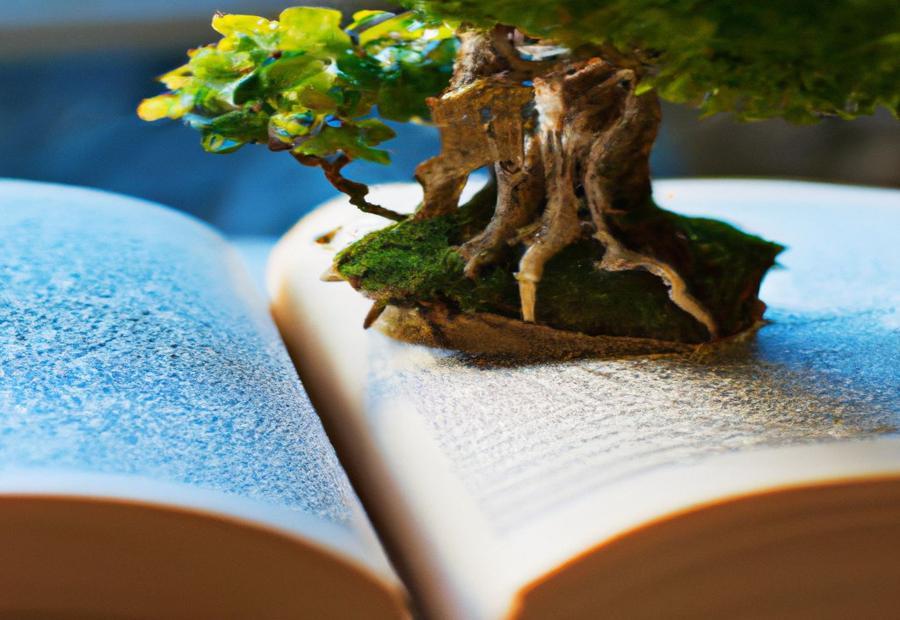
Photo Credits: Gardeninggurus.Org by Vincent Allen
With Mame Bonsai, you can enjoy the best of both worlds – compact size and remarkable features. Discover the enchanting allure of miniature flowers and fruits that bloom in full magnificence. Experience the convenience of effortlessly styling these bonsai trees to achieve your desired aesthetic. Source data showcases the awe-inspiring beauty and versatility of Mame Bonsai, making it a must-have for gardening enthusiasts.
Flowers and Fruits: Miniature Beauty in Full Bloom
In the world of Mame Bonsai, flowers and fruits take center stage. Miniature versions of these natural wonders, carefully nurtured and shaped, create a captivating spectacle of vibrant blooms and miniature fruits. Each tiny flower contains the essence of its larger counterparts, displaying a condensed version of nature’s grandeur.
The artistry and precision involved in cultivating these petite botanical wonders offer a unique visual experience. Horticulturists can employ techniques such as pruning, shaping, and repotting to deliberately influence the size and appearance of these blooms. This creates visually delightful arrangements that rival those found in traditional-sized gardens.
Miniature fruit production is also a testament to the remarkable resilience and adaptability of these tiny trees. This symbiotic relationship between plant and practitioner amplifies the beauty contained within each miniature tree, providing joy to both the cultivator and admirer. Mame Bonsai gardening brings forth the enchanting spectacle of miniature beauty in full bloom.
Ease of Styling: Quickly Achieving the Desired Look
Mame bonsai styling is simple, letting gardeners achieve their desired look quickly and efficiently. There’s a plethora of techniques and designs to explore! Pruning and shaping mame bonsai trees can lead to amazing visuals. Plus, the small size makes it easier to work with than larger varieties. Through innovative techniques and understanding of styling, enthusiasts can craft miniature masterpieces that capture attention.
Moreover, mame bonsai gardening is a great platform for expressing creativity. With the ease of styling, individuals can experiment with different arrangements and cultivate their own style. With practice, one can perfect their skills in shaping mame bonsai trees, creating personalized works of art that showcase their unique vision.
Conclusion: Nurturing and Enjoying Mame Bonsai
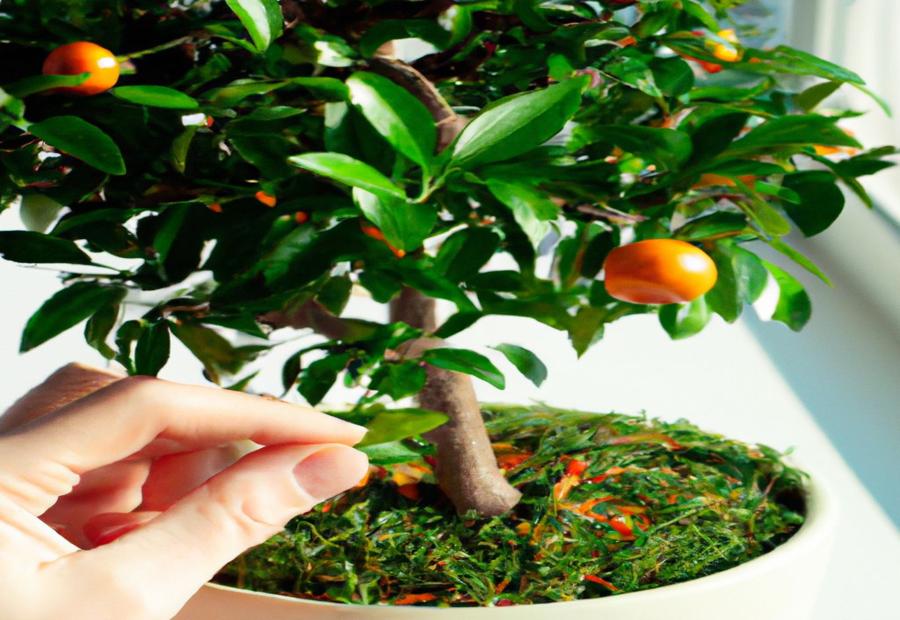
Photo Credits: Gardeninggurus.Org by Aaron Hernandez
Text:
Mame bonsai gardening is an exciting and pleasurable activity that involves taking care of small bonsai trees. These miniature trees, called mame bonsai, need special attention and particular techniques to stay healthy. By reading the reference data, one can understand the art of growing and admiring these tiny masterpieces.
Picking the right tree species and learning its special needs is the first step in caring for and relishing mame bonsai. Different kinds of trees have different needs in terms of sunlight, moisture, and watering. By studying the reference data, fans can gain valuable info about the particular needs of their chosen bonsai tree and make an ideal atmosphere for its growth.
In addition to creating the ideal environment, it is important to practice good maintenance. Regular and attentive pruning is essential for keeping the size and shape of mame bonsai. The reference data gives helpful techniques and hints for pruning and shaping the bonsai tree, ensuring its beauty.
Also, the reference data stresses the importance of regular watering and fertilizing for the wellbeing of mame bonsai. The amount and frequency of watering depend on various factors, such as the type of soil and the size of the pot. And, the perfect fertilizer can give the necessary nutrients to help healthy growth. By following the instructions in the reference data, bonsai enthusiasts can make sure their mame bonsai are fit and healthy.
Pro Tip: It’s important to remember that the art of mame bonsai gardening needs patience and commitment. Monitoring and care regularly are very important for the long-term success of these mini trees. By including the knowledge from the reference data in their gardening routine, people can cultivate a deep appreciation for the art of mame bonsai and experience the joy of caring for these small yet marvelous plants.
Conclusion: Taking care of and enjoying mame bonsai need careful attention, special techniques, and regular care to stay healthy. By reading the reference data and adding its knowledge to their garden activities, people can cultivate a deep admiration for the art of mame bonsai and experience the delight of caring for these small yet amazing plants.
Some Facts About Mame Bonsai Gardening:
- ✅ Mame bonsai is a type of bonsai tree that grows up to 15 cm and is considered Mame bonsai when it is between 3 to 5 years old. (Source: abanahomes.com)
- ✅ Mame bonsai can be grown from seedlings or propagated from a plant species that thrives well in the location. (Source: abanahomes.com)
- ✅ To care for Mame bonsai, regular watering, proper sunlight, good drainage, and frequent pruning are necessary. (Source: abanahomes.com)
- ✅ Mame bonsai can bear flowers and fruits despite their small size. (Source: elmaskincare.com)
- ✅ Mame bonsai is popular among bonsai growers due to their compact size, relatively quick styling, and ability to fit in small spaces. (Source: elmaskincare.com)
FAQs about Mame Bonsai Gardening
FAQ 1: How do I grow Mame Bonsai quickly from seedlings?
Answer: To grow Mame Bonsai quickly from seedlings, you can sow a pinch of the seed of your chosen species and thin out the seeds as desired. This method allows for faster growth and development of your Mame Bonsai.
FAQ 2: Can I personalize the Mame Bonsai I purchase on Etsy?
Answer: Yes, many sellers on Etsy offer personalized, made-to-order items, including Mame Bonsai. To personalize an item, open the listing page, choose the desired options, fill out the requested information in the “Add your personalization” section, and proceed to checkout.
FAQ 3: What are the ideal growing conditions for Mame Bonsai?
Answer: Mame Bonsai thrives in a sunny location with good drainage and a fine grade of soil. They require frequent watering whenever the topsoil feels dry, but overwatering should be avoided. Providing a well-shaped canopy, proper fertilization, and regular pruning are also essential for their growth.
FAQ 4: How can I buy Mame Bonsai plants online?
Answer: You can buy Mame Bonsai plants online from various sources, including Etsy and bonsai nurseries. On Etsy, you can find a wide range of Mame Bonsai options from sellers like LiveBonsaiTree. Simply browse the listings, select the desired plant, and add it to your cart.
FAQ 5: Can Mame Bonsai be grown from off-shoots or cuttings?
Answer: Yes, Mame Bonsai can be grown from off-shoots or cuttings. This propagation method involves carefully transferring a plant species that thrives in your location to a container with proper soil and moisture. With the right care, these off-shoots or cuttings can develop into beautiful Mame Bonsai trees.
FAQ 6: What are the benefits of owning Mame Bonsai?
Answer: Owning Mame Bonsai offers several benefits, such as their compact size that fits well in small spaces like apartments or houses. Despite their small size, Mame Bonsai can still bear flowers and fruits. They also offer the flexibility to be grown into standard-sized bonsai if desired, and their unique and creative appearance adds beauty to any setting.


